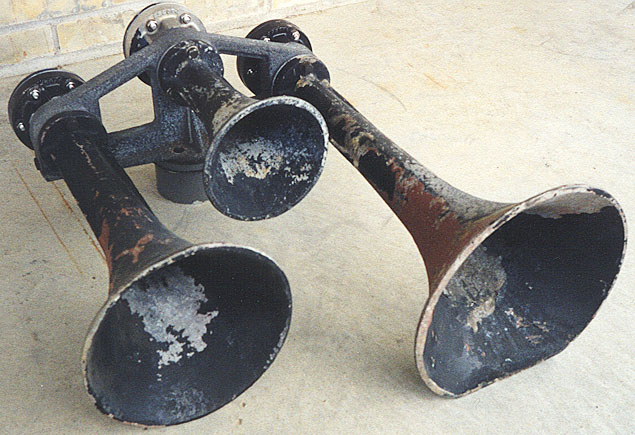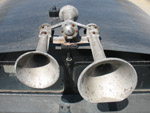Prime PM-920 | |
|---|---|
 | |
Horn and photo courtesy Brent Lee | |
 | Introduced in 1972, the PM-920 was Prime Manufacturing's copy of the Leslie S-3L. Externally, the horns can be distinguished by the perfectly round contour where the bells meet the base on the Prime horns, compared to a more complex contour on the Leslie horns, and by the absence of the Leslie trademark on the manifold. Prime power chambers have domed back caps similar to the pre-RS Leslie power chambers. The horn pictured uses the triangular base that would have been an L-manifold on a Leslie horn; a base similar to the standard Leslie diamond-shaped manifold was also an option.The horns pictured are all "second generation" horns, produced from 1973 to the mid-1980's. The largest bell has a flat portion on the bottom of the flare, while on "first generation" horns, the flare is round like the other bells. "Third generation" horns produced from the mid-1980's to the end of production in 1999 had flat bottoms on the flares of the two largest bells. Some third generation horns included optional internal Kepner valves on the two outer manifold positions. The spring-loaded internal valves kept the two outer (usually smaller) bells silent when the engineer's horn valve on the locomotive control stand was only partially opened, so only the middle (usually largest) bell would sound. All three bells would sound when the engineer's horn valve was fully opened. In the field, the internal valves had a tendency to stick or otherwise malfunction when fouled. |
 | |
Original tuning was: 263, 317, and 446 Hz (approximately C, D#, A)Over the course of the production run, the pitches of some bells began to vary from their original specifications. "Third generation" PM-920 horns tend to play: 247, 317, 446 Hz (approximately B, D#, A)
On some examples, the smallest bell's pitch was shifted closer to G#.
| |
Missouri Pacific, Union Pacific, and Milwaukee Road were big users of the Prime 920. Prime ceased manufacturing horns for locomotives in 1999, and UP has pretty much eliminated Leslie and Prime horns from its roster. PM-920's can still be heard on a few older shortline and museum locomotives.
| |
PM-920 sound samples"First generation" Courtesy Ron Chamberlain:
Sample 2...169kB...11 seconds
Largest bell reversed on center position, courtesy Ron Chamberlain: When bad things happen to good horns
Courtesy Ron Chamberlain: | |